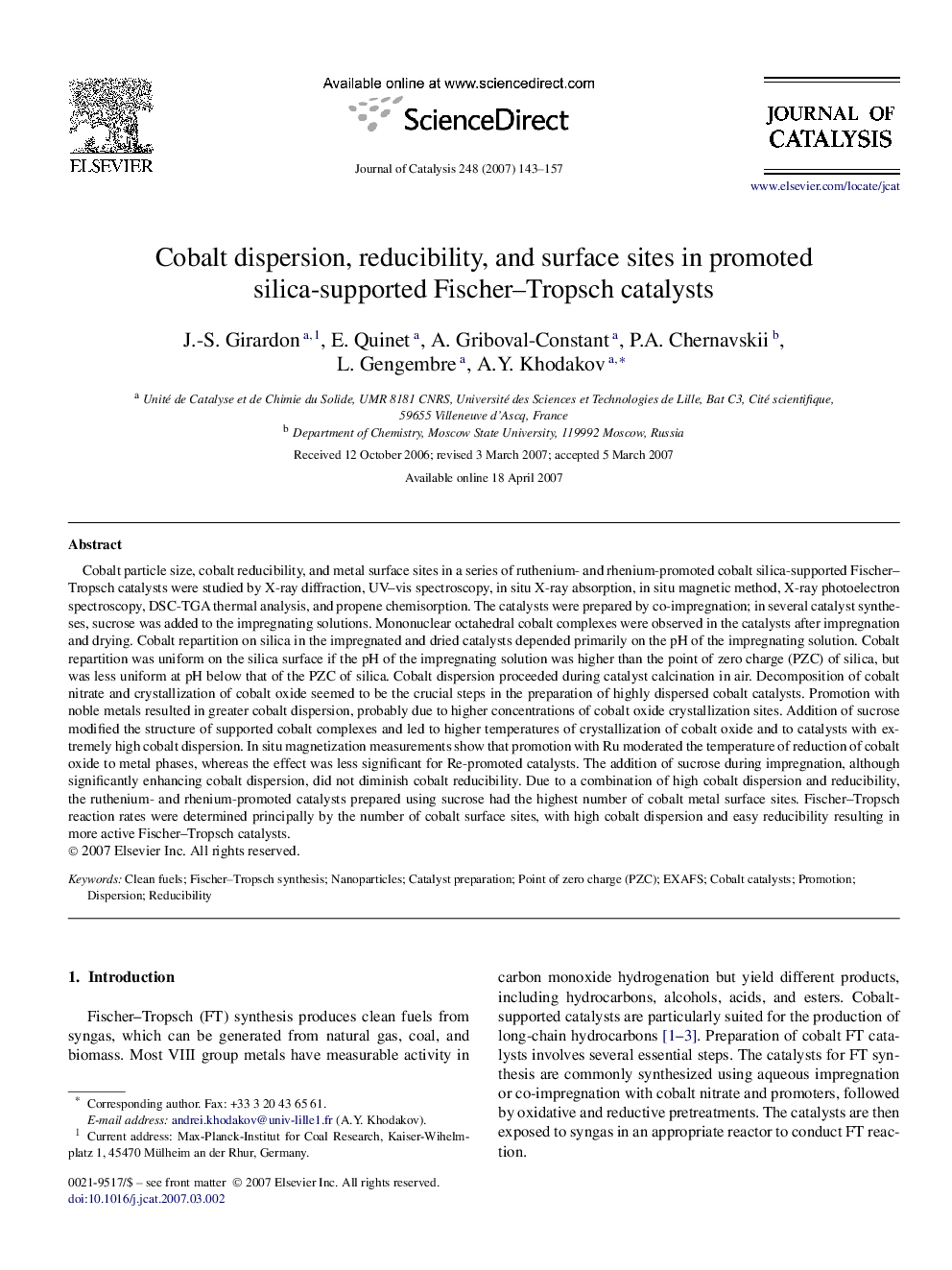| کد مقاله | کد نشریه | سال انتشار | مقاله انگلیسی | نسخه تمام متن |
|---|---|---|---|---|
| 62789 | 47656 | 2007 | 15 صفحه PDF | دانلود رایگان |

Cobalt particle size, cobalt reducibility, and metal surface sites in a series of ruthenium- and rhenium-promoted cobalt silica-supported Fischer–Tropsch catalysts were studied by X-ray diffraction, UV–vis spectroscopy, in situ X-ray absorption, in situ magnetic method, X-ray photoelectron spectroscopy, DSC-TGA thermal analysis, and propene chemisorption. The catalysts were prepared by co-impregnation; in several catalyst syntheses, sucrose was added to the impregnating solutions. Mononuclear octahedral cobalt complexes were observed in the catalysts after impregnation and drying. Cobalt repartition on silica in the impregnated and dried catalysts depended primarily on the pH of the impregnating solution. Cobalt repartition was uniform on the silica surface if the pH of the impregnating solution was higher than the point of zero charge (PZC) of silica, but was less uniform at pH below that of the PZC of silica. Cobalt dispersion proceeded during catalyst calcination in air. Decomposition of cobalt nitrate and crystallization of cobalt oxide seemed to be the crucial steps in the preparation of highly dispersed cobalt catalysts. Promotion with noble metals resulted in greater cobalt dispersion, probably due to higher concentrations of cobalt oxide crystallization sites. Addition of sucrose modified the structure of supported cobalt complexes and led to higher temperatures of crystallization of cobalt oxide and to catalysts with extremely high cobalt dispersion. In situ magnetization measurements show that promotion with Ru moderated the temperature of reduction of cobalt oxide to metal phases, whereas the effect was less significant for Re-promoted catalysts. The addition of sucrose during impregnation, although significantly enhancing cobalt dispersion, did not diminish cobalt reducibility. Due to a combination of high cobalt dispersion and reducibility, the ruthenium- and rhenium-promoted catalysts prepared using sucrose had the highest number of cobalt metal surface sites. Fischer–Tropsch reaction rates were determined principally by the number of cobalt surface sites, with high cobalt dispersion and easy reducibility resulting in more active Fischer–Tropsch catalysts.
Journal: Journal of Catalysis - Volume 248, Issue 2, 10 June 2007, Pages 143–157